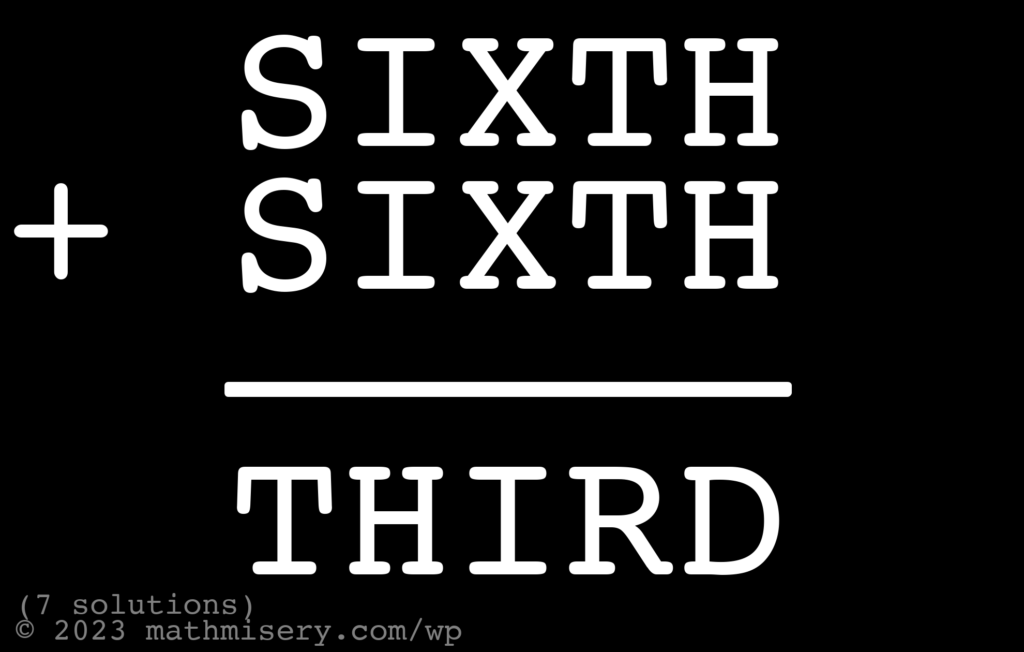Having trouble with fractions? Well, this one is true: SIXTH + SIXTH = THIRD
Solutions are below the image.

SPOILER SOLUTIONS!
| SIXTH_first | SIXTH_second | THIRD_third |
|---|---|---|
| 14729 | 14729 | 29458 |
| 18436 | 18436 | 36872 |
| 27354 | 27354 | 54708 |
| 29458 | 29458 | 58916 |
| 39478 | 39478 | 78956 |
| 43186 | 43186 | 86372 |
| 45791 | 45791 | 91582 |